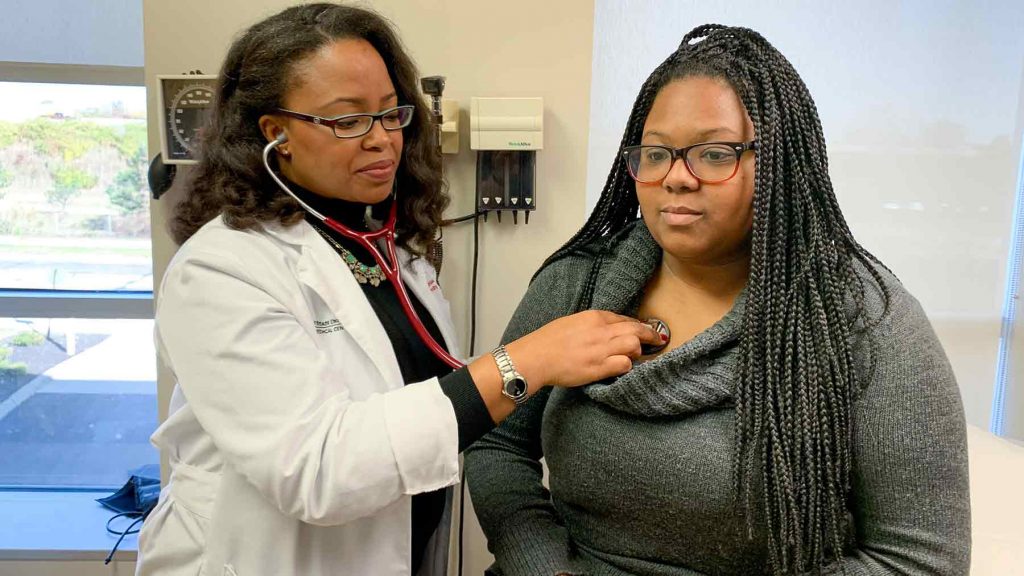How is the extent of pancreatic cancer assessed (staging)?
extended version
When someone is diagnosed with pancreatic cancer, the next step is to figure out if or where cancer has spread. This step is called staging. Staging is based on how much a cancer has grown in a certain area and spread throughout the body. Doctors usually base the type of cancer treatment they give their patients on the stage of cancer that the patient demonstrates. Staging allows for a treatment plan based on the type and extent of cancer you have.
The topic of staging is somewhat complicated, as there are multiple templates that could be used for staging. In the U.S., there is not an agreement on a standard staging system description. For example, the staging that is used by the American Joint Committee on Cancer (AJCC) is based on the TMN approach, which assesses how large the tumor is (T), if it has spread (or metastasized) to different parts of the body (M), and the extent of spread if at all to the lymph nodes (N). This TMN system helps describe Stage l, II, III and lV of pancreatic cancer. It works well in any number of other cancers. In more recent days however, this system has been deemed somewhat impractical for pancreatic cancer by certain professionals. The TMN derived stages may not be helpful for exploring treatment options because they don’t necessarily match the treatment decisions for the patient. And in a number of cases, the extent of the tumor and level of involvement of the lymph nodes can’t be correctly determined without surgery, which many people with pancreatic cancer don’t receive anymore.
Currently, staging largely tends to be based on radiology, scans and ultrasound. A different staging system has arisen that classifies pancreatic cancers based on the results of these kinds of tests. This classification system is comprised of three stages: potentially resectable (eligible for surgery), locally advanced, and advanced. It is generally based on radiological findings and does not directly refer to the stages of the TMN system.
The stage of pancreatic cancer that is described as potentially resectable roughly includes cancers that have not spread beyond the pancreas, have not deeply “encased” the major veins around the pancreas, and have not surrounded major related arteries. These cancers are potentially resectable because they may be able to be removed with surgery. A subcategory of cancers that are related to “potentially resectable” pancreatic cancers are “borderline resectable” pancreatic cancers. These cancers usually have reached certain blood vessels in the pancreas but appear to the surgical team as if they can be removed without too much damage. Tumors like these may be able to be removed by surgery, but this possibility is not certain.
The locally advanced pancreatic cancer stage is characterized by the tumor “encroaching” (surrounding) certain arteries in the pancreas or blocking certain blood vessels. Most of these cancers have not spread beyond the pancreas but may be too difficult to remove by surgery.
Advanced pancreatic cancer describes cancer that has spread beyond the pancreas to areas like the liver, lymph nodes, peritoneum or lungs.
Overall, staging is designed to assess the extent and position of the physical pancreatic cancer that a patient is presenting with to help providers decide which type of treatment plan may be best. There are other terms and staging classifications that are used besides the ones discussed, which can be confusing. It is possible that with the development of more advanced radiographic techniques, staging may become less reliant on surgical findings and allow for a more uniform version of stage classifications.
Extended Version
Categories






Written by: Jasmine Mitchell, University of California Santa Barbara
Edited by: Dale O’Brien, MD, Cancer Patients Alliance
Formatting and content by: Raewyn O’Haire, AB, Cancer Patients Alliance
Consultant: Neil Atam, University of California Santa Barbara
Top Reference
Pancreatic resection: a key component to reducing racial disparities in pancreatic adenocarcinoma
Click Here
Click Here for the ACS Journal article